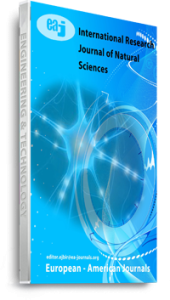The present paper provides the results of a study on the diel activity of millipedes and centipedes from two different in terms of anthropogenic impact sites located in northeastern Bulgaria. The presumed differences in the diel activity of myriapods were tested using various statistical methods: the criterion of Kolmogorov, 2 criterion of uniformity, Pearson’s normalized correlation coefficients, and the multivariate regression analysis. . The results show that the diel surface activity of the established species depends on the degree of illumination (number of hours in a day), the air and the soil temperature. However, the activity was not affected by relative humidity, active seasons, and the degree of anthropogenic impact. The diurnal activity conducted in urban and natural habitats confirmed the nocturnal nature of the established species, which are most active in the time interval from 10:00 pm to 4:00 am. This activity is likely to have endogenous nature and it is controlled by internal physiological factors, but its duration may vary according to the changes in the environmental conditions.
Keywords: Activity, Bulgaria, Circadian Rhythms, Rural, Urban

